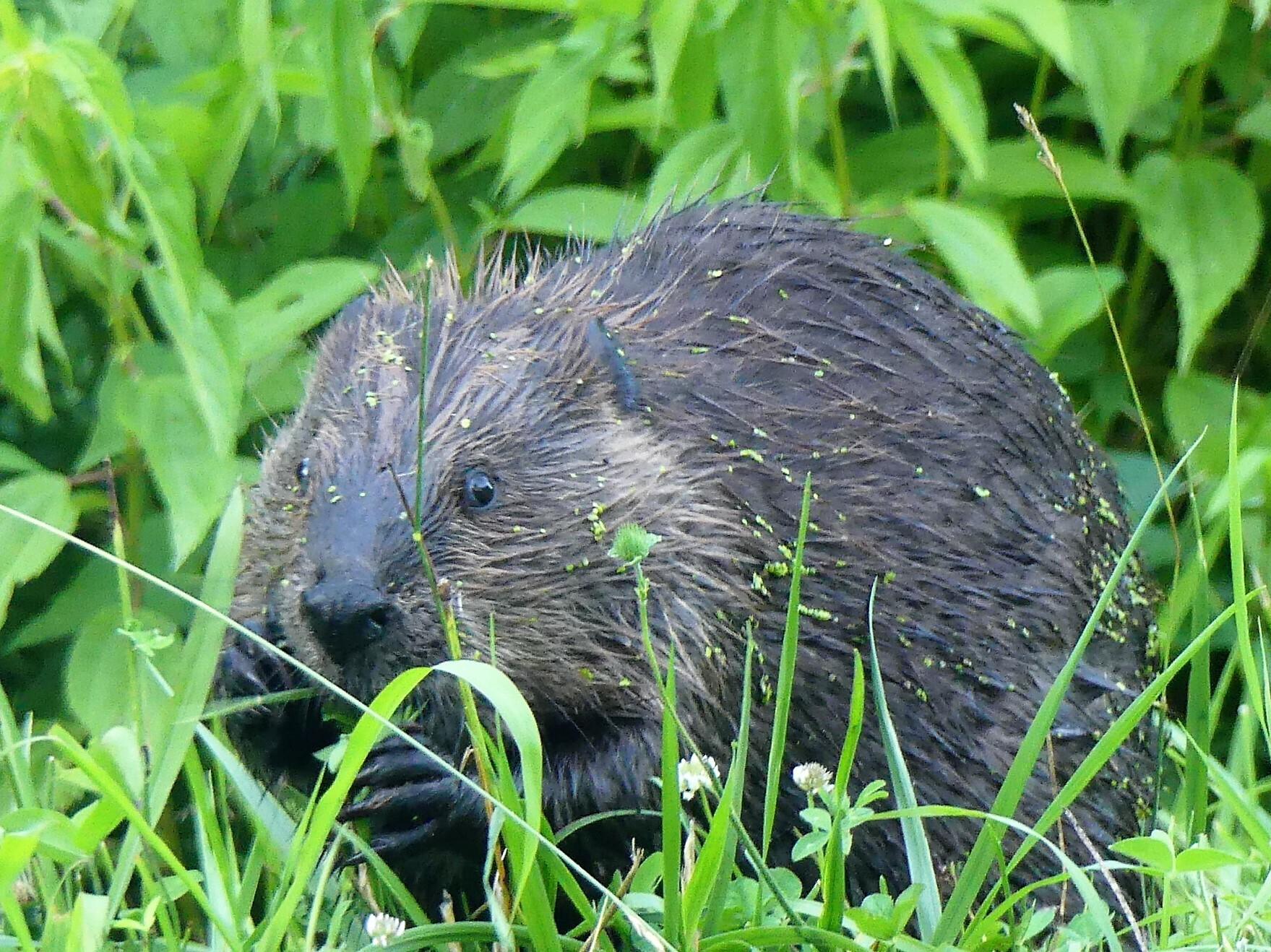Woodland Wildlife Spotlight: American Beaver
From Winter 2023 issue of Branching Out. Subscribe to Branching Out here. Read more Woodland Wildlife Spotlights here.

American beaver in Dorchester County, MD. Photo © bev45, iNaturalist.org
From Winter 2023 issue of Branching Out. Subscribe to Branching Out here. Read more Woodland Wildlife Spotlights here.
What do high fashion, “Alice in Wonderland,” and Oregon State University have to do with this issue’s spotlight? They all have the American beaver in common in one form or another. For OSU, it’s their mascot. For high fashion, it’s the beaver’s pelt—water repellent and, thanks to the abundance of American beavers reaching European markets in the 18th and 19th centuries, all the rage as the foundation of gentlemen’s hats. But working with those pelts involved soaking them in liquid mercury, which led to neurological poisoning and insanity for many. Lewis Carroll’s character, often called “the mad hatter” (although he never used the descriptor), wears a tall beaver hat and is generally considered less than sane. All thanks to the American beaver.
The beaver is the largest rodent in North America. Their large size and distinctive flat tail distinguishes them from other fur-bearing mammals found in similar habitats in Maryland, such as martens and weasels. The tail serves several purposes—fat storage, steering while swimming, and as a warning device for other beavers. Slapping the tail against the water alerts others in the area of potential predators.
The beaver is a mostly nocturnal herbivore that feeds on leaves, woody stems, and aquatic plants. They regularly move between aquatic and terrestrial habitats, using their small, dexterous front feet to work on land and their larger, webbed hind feet for swimming. While they are awkward on land, they are adept swimmers and can hold their breath for up to 15 minutes and travel up to a half-mile underwater.
Like all rodents, beavers have visible incisors that grow throughout their lifetime that need to be worn down through daily use. For the beaver, that means not only feeding, but gnawing on trees at the water’s edge, engineering their efforts to cause the tree to fall into the water. From there, it gnaws off the branches of larger trees or the trunks of saplings to build two signature structures: their dams and their lodges.
| American Beaver Basics |
|---|

Appearance: Reddish-brown fur with distinctive hairless tail. Short legs with large body. Small ears relatively flush against the head. Size: 30-60 lbs. and up to 40 inches in length. Lifespan: Typically 10-12 years. The oldest on record lived 30 years in human care. |
The dams slow the flow of streams, creating floodplains that reduce erosion and ponds that attract a wide variety of wildlife. Their lodges, sometimes built along the riverbank but other times away from the shore, can be up to 6 feet tall and 35 feet across. Underwater entrances lead to above-water living quarters, which the beavers line with wood shavings for bedding and to reduce moisture.
All of this construction takes place primarily during the spring and summer, although the animals will perform maintenance on them throughout the year. They also store food within the lodge for later use. Beavers are monogamous and will breed in January and February, with a single litter of two to five kits being born in May or early June. The young have fully-developed teeth and can start eating vegetation by three weeks of age. They can swim almost immediately after birth. The newborns join a family group that consists of the parents and year-old siblings. The yearlings help with raising their siblings and with dam maintenance until they are driven out by the adults to find their own territory before the birth of the next litter.
Early European explorers found the species in great abundance on this continent. Americans and Canadians spent decades in the 19th century trapping beavers across the continent, almost to the point of extinction. Scarcity and a change in fashion tastes helped the species survive. By the early 20th century, a better understanding of beavers’ role in ecosystems led to reintroduction efforts in many states.
Thanks to conservation efforts in Maryland, beavers are now found in every county. And while some property owners consider them nuisance animals, they actually contribute to healthier ecosystems in a variety of ways. In particular, Maryland researchers note that beavers’ behaviors lead to reduced sediment loads in streams, contributing in part to a healthier Chesapeake Bay.
Branching Out, Vol. 31, no. 1 (Winter 2023)
Branching Out is the free, quarterly newsletter of the Woodland Stewardship Education program. For more than 25 years, Branching Out has kept Maryland woodland owners and managers informed about ways to develop and enhance their natural areas, how to identify and control invasive plants and insects, and about news and regional online and in-person events.